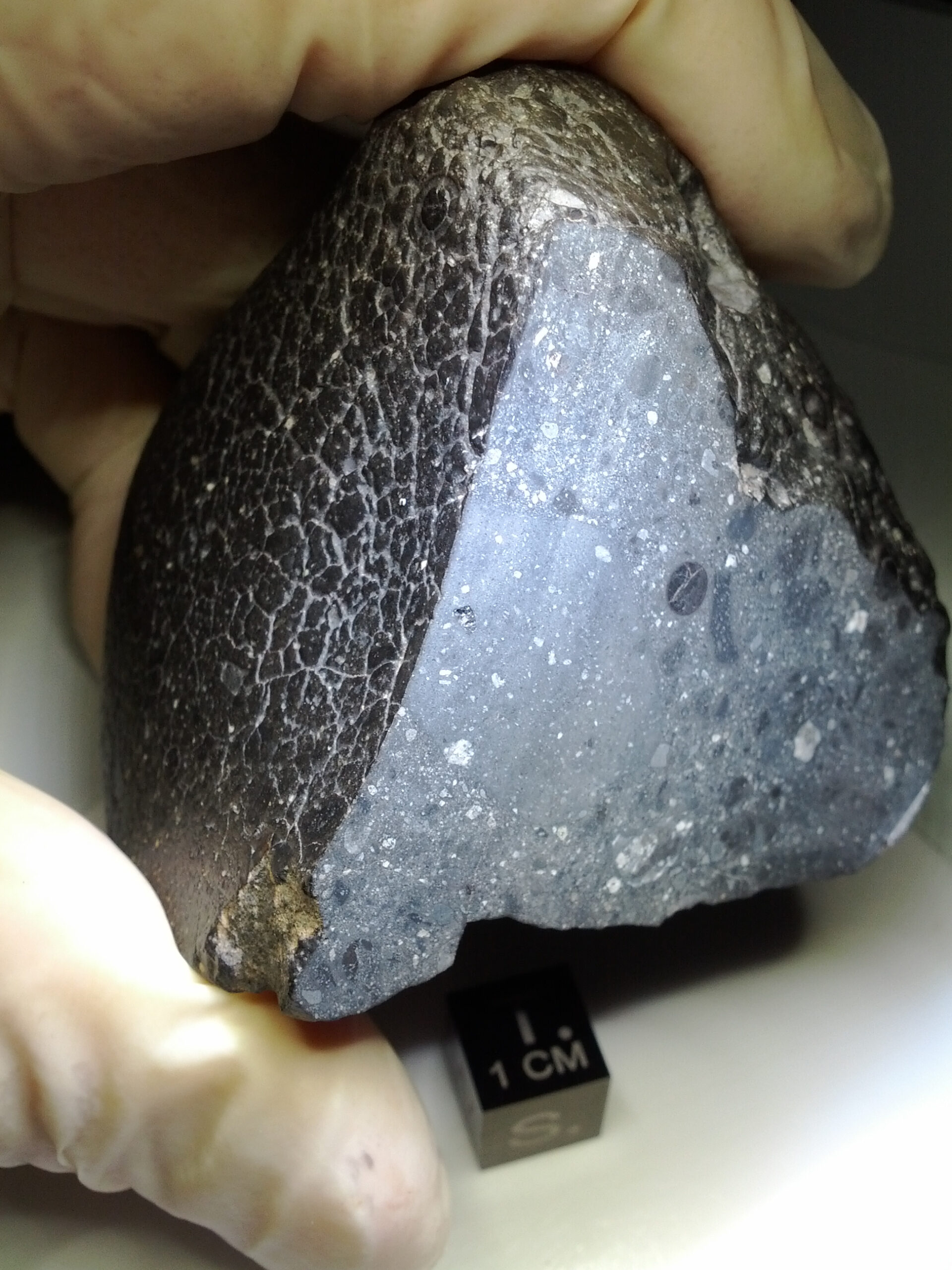Almost 10 million years ago, a meteorite crashed into Earth.
Hidden inside were 23 microscopic grains which tell the story of how Mars evolved.
Using one of WA’s most powerful supercomputers, astronomers have now uncovered the meteorite’s life story.
A CHEMICAL CLOCK
Around 5–10 million years ago, a meteorite containing zircon crashed into Africa. When scientists discovered it in 2011, they named it NWA 7034. It was also nicknamed Black Beauty because of its colour.
The meteorite contained 23 grains of zircon. Scientists used the tiny crystals to corroborate how Mars is thought to have formed.
Zircon forms when magma crystallises, meaning astronomers can use it to work out how old planets are.
In the earliest days of a planet’s creation, magma spews across the still-forming surface. All this magma caused zircon to deposit on the surface of Mars as it cooled.
Zircon contains radioisotopes. These are chemicals that break down into more stable forms and emit radiation.
Because these chemicals decay at a predictable rate, researchers can use them like a clock. They use the ratio of the original chemical and the decayed chemical to calculate how long ago the zircon crystallised. In this way, it can shed light on the age of a planet.
Tracking black beauty
So how did scientists know Black Beauty came from Mars? Astronomers ground up a small chunk of the meteorite and analysed its chemical composition.
Around the same time, the Curiosity Rover and Mars Reconnaissance Orbiter missions were on Mars. And they were sending back information about the planet’s rocky surface. The comparison showed Black Beauty was most likely from Mars.
It took another 9 years to pinpoint where on Mars Black Beauty came from.
A team of researchers from WA and France studied images of Mars to find Black Beauty’s home. They analysed over 90 million meteorite impact craters.
Kosta Servis is a senior data scientist for Pawsey Supercomputing Centre. He helped analyse all the data to identify where Black Beauty originated from.
Kosta says researchers narrowed down the possible origin sites by studying the meteorite’s minerals and size.
“[Calculating the] energy required to escape the gravity of Mars and hence the energy of the impact, we are able to constrain and, to some degree of certainty, eliminate the other candidate ejection sites.”
The team settled on an unnamed 10km crater in the Terra Cimmeria-Sirenum province of Mars. This area lies in the planet’s southern hemisphere. The team named it Karratha after the Australian town’s iconic rock formations.
it’s in the clouds
The most popular theory of planet formation is from the protoplanetary disk.
Molecular clouds are massive space clouds of dust and gas. And by massive, we mean they span lightyears from one side to the other. When a dense pocket of these clouds collapse under its own gravity, a star is born.
The new star causes parts of the remaining gas cloud to orbit it. This is the protoplanetary disk. Particles of dust and ice collide to form miniature planets, called planetesimals. Eventually, they build up to form fully fledged planets. There’s even a video game where you can do this yourself.
Astronomers predict this using the Hubble telescope to observe nearby gas forming clouds. An example is the Orion Nebula, which is still forming solar systems and stars.

Astronomers then use computer simulations of accretion to model how the gas clouds behave.
This new understanding of Mars is much bigger than the Red Planet.
“By understanding how Mars was formed, we are able to understand how our Solar System evolved,” says Kosta.
“This informs us about how other planetary systems evolve. It helps us [understand] the evolution of life and where we could look for life outside our Solar System.”
About 20 million years after forming, the Mars crust stabilised. Oceans of magma cooled and crystallised. And trillions of tonnes of rock settled to become the planet we know today.
With recent research suggesting Mars is more seismically active than previously thought, perhaps there is more awaiting discovery.










